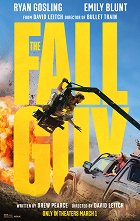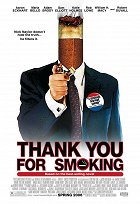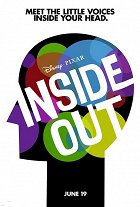Comedy - Genres
Hottest on Streaming Today
Origin and characteristics of the comedy
Comedy is a fictional genre whose main aim is to entertain the audience with humour, offering them a hilarious escape from everyday mundanity. It is the opposite of tragedy, in comparison to which it has always been considered a lower form of dramatic work. Its basic aspect is humour, which can take various forms, but it is essentially divided into verbal (spoken) and non-verbal (mainly comic movements, gestures and mimicry, or funny work with props). Some types of humour can also have a more serious and pessimistic tone. With few exceptions, comedy is characterised by happy and cheerful endings, in which the actions of the protagonists, after all possible vicissitudes, are brought to a successful conclusion. A typical feature is the exaggeration of the comic effect of all sorts of situations as well as the speech, behaviour and actions of the characters using hyperbole, irony, satire and parody, by means of which all sorts of social phenomena and human characteristics, weaknesses and shortcomings are thematised and sometimes ridiculed. In addition to theatre and film, comedy is a genre commonly associated with literature, television programmes, radio plays and other forms of media entertainment or public performances.
Comedy originated along with tragedy in ancient Greece, with the term "comedy" itself meaning "merry singing", referring to the tradition at the time of festive performances consisting of dancing, choral singing and humorous (or critical) scenes from life. In ancient Greece, there was an institutionalised theatre based on dramatic texts by various authors, and one of the most famous in terms of comedy was Aristophanes. Its main purpose was entertainment, but it also had a religious and political function – performances were often accompanied by ceremonial rituals, and comedy was often associated with political farce. The use of masks, costumes and props was also common. These traditions were continued in ancient Rome, which enriched them with new customs, such as the use of make-up instead of masks, and theatre also underwent a significant transformation in the medieval period. During the Renaissance, the first indoor theatres were built and travelling companies with actors and jugglers were established (commedia dell' arte). The plays of William Shakespeare were a major influence on the form of tragedy and comedy at the time. Theatre continued to develop during the Baroque, Classicism, Romanticism, Realism and other subsequent movements, and comedy in particular was developed by, for example, pantomime, the theatre of the absurd and the traditions of cabaret, burlesque, varieté and circus.
Different forms of the comedy genre
Comedy has taken many different forms over the ages, due not only to changes in society and the ongoing development of cinema, but also to its combination with other genres. The most important aspects distinguishing the different forms of comedy are the nature of the humour, the typology of the main characters, and the nature of the plot. Classical comedy or conversational comedy, for example, contains mainly verbal humour of a more restrained nature, while slapstick relies purely on non-verbal humour generated by the physical actions of the protagonists and visual gags. The crazy comedy is also based more on non-verbal humour, supplemented by a greater degree of exaggeration and a wacky plot. Black comedy, on the other hand, is characterised by a specifically dark style of humour, satirically working with morbid motifs such as death, terminal illness, murder or suicide. Bitter comedy also works with serious themes, weaving humour with sadness. Comedy of manners basically corresponds to aspects of classical comedy, but on top of that its main theme is an ironic commentary on social conventions and human behaviour. Humorous criticism of shortcomings in society or politics is the subject of satirical comedy, which, in addition to irony, often uses caricature. The humour of the situation comedy, on the other hand, derives from the funny reactions of a group of characters exposed to unusual situations. The basis of parody is, in turn, an imitation of something or someone, giving it a different form and enriching with a humorous dimension – film parodies often mock traditional the clichés of other genres or specific films.
The combination of comedy with another genre occurs when the resulting film simultaneously fulfils the specifics of both genres. We therefore recognise romantic comedies, action comedies, crime comedies, horror comedies, fantasy comedies, science fiction comedies, adventure comedies, war comedies, musical comedies, comedy thrillers, comedy dramas (or tragicomedies), comedy westerns and many other variations. A special sub-genre of romantic comedies are the so-called "screwball" comedies, which, in addition to making fun of traditional romantic stories, add absurd elements to them and replace the mutual seduction of the main characters with their witty conversation. Sexual comedies are usually associated with the romantic genre, thematising the characters' defiance, desires and sexual motivations.
The coming-of-age comedy is defined by its adolescent protagonists, while teen comedy, which is a continuation of sex comedies, is distinguished from it by its harsher and more vulgar humour and a plot based on sexual motivations. Depending on the types of characters, we can also distinguish between family, detective, spy, mafia, martial arts or redneck comedies, and animated and puppet films can also be comedies. Compared to other comedies, the Christmas comedies have a Holiday theme, while sports comedies take place in the environment of athletes. A sub-genre of horror comedy, besides the zombie comedy, is the "splatter", characterised by excessively bloody and hilariously inventive scenes of brutal violence that serve as a comic element. The term "mockumentary" refers to fake documentaries that use authentic-looking forms of the genre to portray fictional events, which in some cases can also be comedies.
The Waterer Watered (1895)
Photo © Lumière
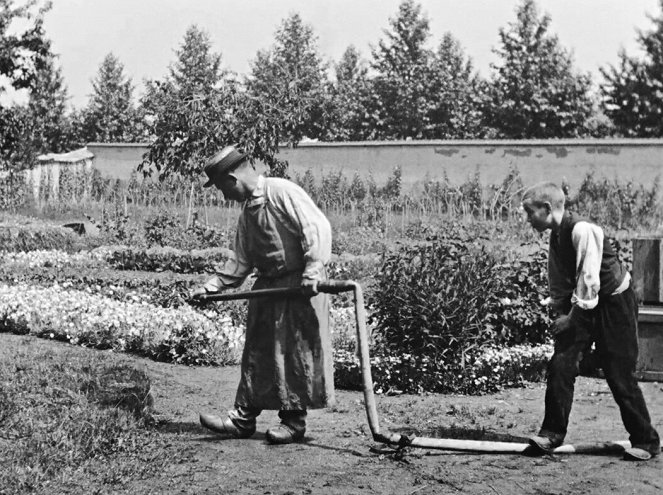
Early silent comedies and slapstick
Comedy is the oldest film genre, dating back to the year of the birth of cinema itself. Louis Lumière's The Waterer Watered (1895), a fifty-second film in which a young urchin makes fun of a gardener sprinkling a flower bed, is considered the very first film comedy, and had three remakes in 1896 and 1897. Most of the first film comedies were made by the French, and their first star was the comedian André Deed. Much more famous, however, Max Linder, who, in contrast to other comedy actors often cast for their funny looks, played the characters of dapper men with well-groomed moustaches chasing after attractive ladies. At the height of his fame, he made one short film a week, many of which he wrote and directed himself (e.g. The Surprises of a Flirtation, 1909) and later made medium-length comedies in the USA (e.g. Be My Wife and Seven Years Bad Luck, both 1921).
In America, comedy did not really come on the scene until 1912, with the films of director and producer Mack Sennett (The Knockout, 1914), who often cast circus performers or actors with a distinctive look (fat, stocky, cross-eyed, crooked smiles, etc. ) and used speed-up images, action chases, stunts and all sorts of crazy gags – for example, A Noise from the Deep (1913) was the first film where a whipped cream pie is thrown in the protagonist’s face. The reigning comedy genre was, of course, slapstick, because it could only rely on physical action, instead sound and speech. Popular comedy actors at the time include Harry Langdon (1924's The Hansom Cabman, 1926's The Strong Man), Roscoe "Fatty" Arbuckle (1918's The Bell Boy and The Cook, 1920's The Garage), Mabel Normand (1926's Raggedy Rose), and the cross-eyed Ben Turpin (1921's A Small Town Idol). But by far the biggest stars of silent slapstick were Charlie Chaplin, Buster Keaton and Harold Lloyd.
Seven Years Bad Luck (1921)
Photo © Robertson-Cole Distributing Corporation
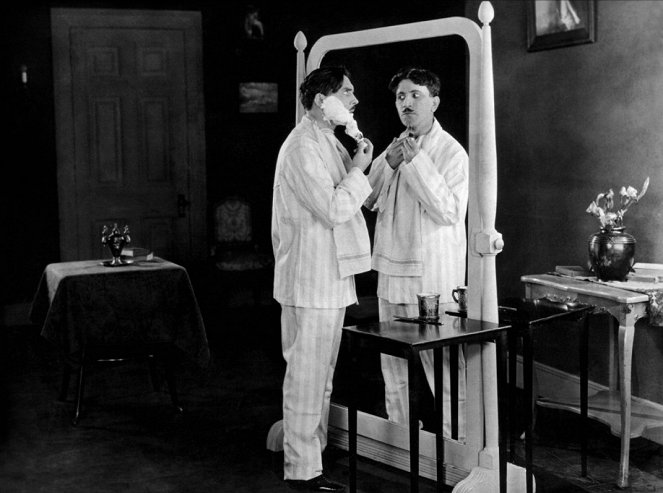
Charlie Chaplin, Buster Keaton and Harold Lloyd
Charlie Chaplin was born and raised in England, but only achieved fame in the USA. He became famous for his pantomime talent and his stylized character of a wilful vagabond with a cane, a bowler hat and a brush-like moustache. His first role was in the short Making a Living (1914), and the same year he appeared in dozens of other slapstick comedies, including Tillie's Punctured Romance (1914), which was the first ever full-length comedy. But the highlights of his career in slapstick shorts were his own films The Fireman (1916), The Rink (1916), One A.M. (1916), Behind the Screen (1916), The Adventurer (1917) and Easy Street (1917). In 1919, he co-founded a film company where he went on to make his most famous comedies: The Kid (1921), in which he plays the guardian of a young orphan; The Pilgrim (1923), in which he portrays an escaped prisoner posing as a priest, The Gold Rush (1925), a Western-themed comedy about gold diggers in Alaska, the romantic The Circus (1928), in which he is a circus employee fighting for the love of a beautiful acrobat, the melodramatic City Lights (1931), in which he tries to help a young blind florist, and the satirical Modern Times (1936), in which he bade farewell to silent film and criticised the mechanization of human existence. In the comedy The Great Dictator (1940) he satirised the fascist practices of the Third Reich, and he also combined humour with serious themes in the playful black crime-comedy Monsieur Verdoux (1947), the bitter comedy Limelight (1952) and the satirical A King in New York (1957).
Buster Keaton became famous for his technique of comedic acting based on a stern, stone-faced expression, signifying utter stoicism that was in stark contrast to the craziness of the surrounding action and thus enhanced the comicality of the situation (later the term "deadpan" was coined for this style of acting). He first appeared in film with Roscoe Arbuckle in the short The Butcher Boy (1917), and he would star with him in other films until 1920, when he got his own studio and started working on his biggest hits, which include One Week (1920), The Scarecrow (1920), Neighbors (1920), The Playhouse (1921), Hard Luck (1921), The Goat (1921), The Blacksmith (1922) and Cops (1922). He then seamlessly followed up with full-length films, including Three Ages (1923), Our Hospitality (1923), The Navigator (1924), Sherlock Jr. (1924), Seven Chances (1925), The General (1926) and Steamboat Bill, Jr. (1928). In many of them, Keaton performed crazy stunts, for example, his gag with the falling wall of a house, which has gone down in history.
Harold Lloyd, who appeared in approximately three hundred slapstick films during his lifetime, became famous for his roles as clumsy men with glasses and straw hats in the short films Ask Father (1919), Haunted Spooks (1920), Get Out and Get Under (1920) and A Sailor-Made Man (1921), and later in the feature films Grandma's Boy (1922), Dr. Jack (1922), Girl Shy (1924), The Freshman (1925) and The Kid Brother (1927). However, he is remembered mainly for his scenes in Look Out Below (1919), High and Dizzy (1920) and Never Weaken (1921), in which he acrobatically balances at high altitudes on window ledges and scaffolding. His most famous film in this respect was the thrilling Safety Last! (1923), in which he tries to raise enough money for a wedding by climbing up a wall to the roof of a high-rise building without any protection.
Modern Times (1936)
Photo © United Artists
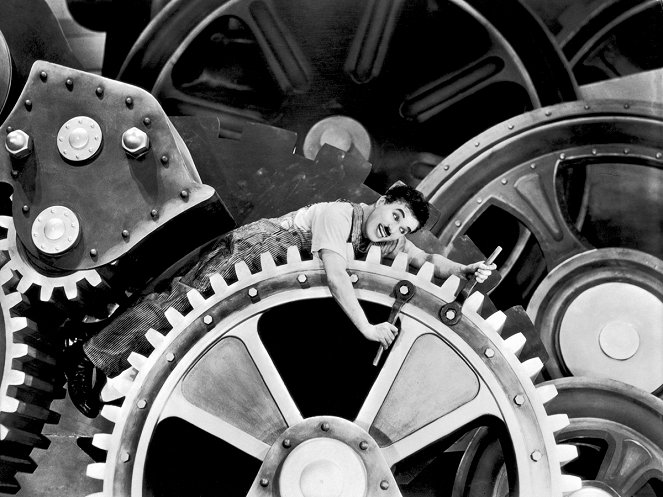
Laurel & Hardy and other comedians of the 1930s
After the advent of sound film, the traditional slapstick went into decline and comedy evolved into new forms and began to work with new themes and motifs. Humour could now be created not only through physical gags but also through witty dialogue. Nevertheless, visual slapstick comedy remained in vogue throughout the 1930s, thanks to several actors who often worked in pairs and larger groups. The most famous of these were Stan Laurel and Oliver Hardy, who together starred in over a hundred short and feature films. They were characterised by their suits and bowler hats and their behaviour resembling a duo of overgrown children due to their clumsiness and mutual bickering. They started out in short silent slapstick films, first separately, meeting for the first time in A Lucky Dog (1921). However, it was not until 1927 that they permanently became a comic duo, when they made together the feature film The Battle of the Century, which was followed by many shorts such as Our Wife (1931), Scram! (1932), The Music Box (1932), Busy Bodies (1933), Going Bye-Bye! (1934) and The Fixer Uppers (1935), but also numerous feature films like Way Out West (1937), Block-Heads (1938), The Flying Deuces (1939), A Chump at Oxford (1940) and Saps at Sea (1940), among others.
Slapstick was also a feature in the films of the spontaneous and wacky Marx Brothers, American comedians, of whom there were five, but only four appeared in films, and only three of them became popular stars. Each of them used a different type of humour and together they developed several comedy traditions. They originally performed musical comedies on Broadway and made their debut in film with an adaptation of one of them, The Cocoanuts (1929). Together they made thirteen films, the most successful of which were the nonsense comedy Monkey Business (1931), the anarchic anti-war satire Duck Soup (1933), and A Night at the Opera (1935), about the sabotage of a theatre performance, but Animal Crackers (1930) and A Day at the Races (1937) are also worth mention. Another popular trio were the members of The Three Stooges, who came on the scene with Soup to Nuts (1930) and later became famous for their humorous escapades based on goofing around, shouting and poking each other, accompanied by various sounds and shrieks (see Men in Black from 1934 or Three Missing Links from 1938). Other popular actors of this period include W.C. Fields (The Bank Dick, 1940), Joe E. Brown (The Circus Clown, 1934) and Mae West (I'm No Angel, 1933).
Duck Soup (1933)
Photo © Paramount Pictures
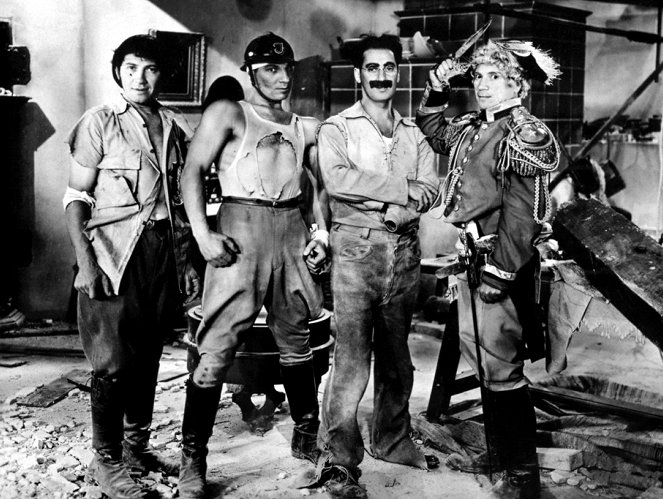
Wacky romantic comedies of the 1930s and 40s
The term "screwball comedy" refers to a specific sub-genre of romantic comedies that have been made in Hollywood since the Great Depression. They are dialogue-based films that poke fun at traditional romantic stories, adding absurd elements and replacing the mutual seduction of the main characters with their witty conversation. The relationship between men and women in them therefore often resembles a verbal duel in eloquence and creative bickering. In addition to fast talk, they traditionally include motifs used in slapstick comedies such as disguises and false roles, the construction of unlikely comic situations and the clash of two different social classes, typically middle class (male) and upper class (female). The prototype of these films are, for instance, Frank Capra's five-Oscar-winning It Happened One Night (1934), with Claudette Colbert and Clark Gable playing a millionaire's daughter and a poor journalist, and Gregory La Cava's six-Oscar-nominated My Man Godfrey (1936), starring William Powell as a man from the slums who finds employment with an eccentric rich family and marries into it at the end.
Other stars of wacky romantic comedies include Katharine Hepburn, Cary Grant, Spencer Tracy, Irene Dunne, James Stewart and Barbara Stanwyck, and directors associated with this sub-genre included George Cukor, Howard Hawks, Leo McCarey, Mitchell Leisen, Preston Sturges and George Stevens. The most famous representatives of wacky comedies include Bringing Up Baby (1938), which enriched the absurd plot about the search for a dinosaur bone with the even more absurd babysitting of a tame leopard, The Philadelphia Story (1940), about a divorced tabloid journalist fighting for the heart of his ex-wife with two other suitors, His Girl Friday (1940), about a newspaper editor trying to win back his ex-wife, a reporter engaged to another man, and Adam's Rib (1949), whose protagonists were a married couple of lawyers who become adversaries in a court case. Other films worth mentioning are The Awful Truth (1937), Easy Living (1937), Holiday (1938), You Can’t Take It with You (1938), Midnight (1939), Ball of Fire (1941), The Lady Eve (1941), Mr. & Mrs. Smith (1941), Woman of the Year (1942), and The More the Merrier (1943).
His Girl Friday (1940)
Photo © Columbia Pictures
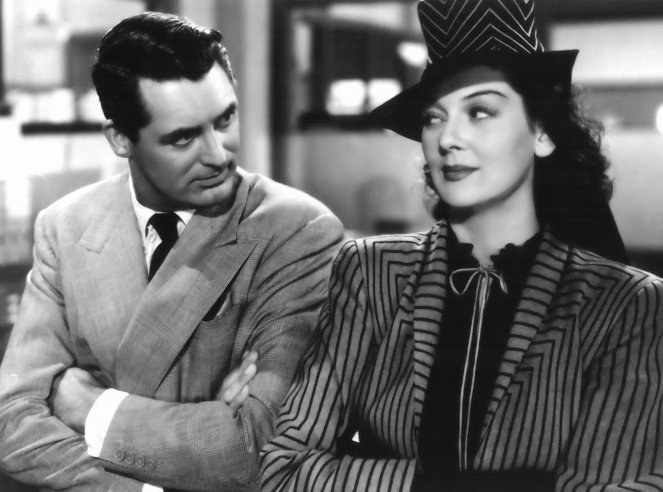
Other comedy variations in the pre-war and post-war periods
While during the Great Depression comedies served primarily as an escape from economic and social problems, other purposes were added during the 1940s. The beginning of the decade was marked by parodies of Nazism and the Third Reich, apart from Chaplin's The Great Dictator, the short grotesque You Nazty Spy! (1940) by The Three Stooges or the animated Der Fuehrer's Face (1942) by Disney are also worth mentioning, and the following years reflected war and military themes (e.g. To Be or Not to Be from 1942 or I Was a Male War Bride from 1949). The crime-comedy film series Thin Man starring William Powell was successful already in the 1930s, combining humour with detective plots (1934's The Thin Man, 1941's Shadow of the Thin Man). Later, a seven-part series of musical travel comedies starring Bing Crosby, Bob Hope and Dorothy Lamour (1940's Road to Singapore, 1942's Road to Morocco) also became popular.
Other popular comedies include Frank Capra’s Mr. Deeds Goes to Town (1936) and Arsenic and Old Lace (1944), George Cukor’s Dinner at Eight (1933), and Ernst Lubitsch Ninotchka (1939) and The Shop Around the Corner (1940). Comedy musicals (1934's The Gay Divorcee, 1942's You Were Never Lovelier), comedy dramas (1937's Stage Door) and satires (1940's The Great McGinty was a social satire, 1941's Sullivan's Travels was a satire of Hollywood) were also successful. There were also more fantasy comedies with supernatural elements; for example, in Topper (1937) a banker receives a valuable life lesson from a group of ghosts, Here Comes Mr. Jordan (1941) worked with the theme of reincarnation, the protagonist of Heaven Can Wait (1943) repented as a sinner at the gates of hell, and the romantic comedy One Touch of Venus (1948) told the story of a man in love with a lifelike statue of the goddess of beauty. The animated cartoons with Mickey, Donald and Goofy from Walt Disney and Bugs, Daffy and Porky from Warner Bros. were also comedies.
To Be or Not to Be (1942)
Photo © United Artists
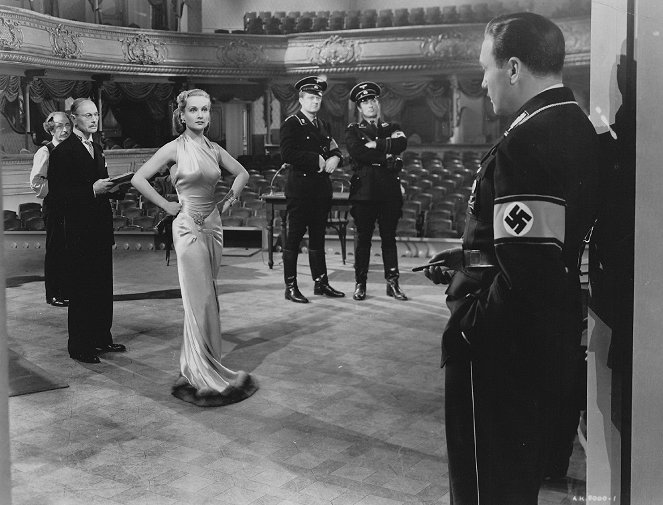
The 1950s, sex comedies and the arrival of television
In the 1940s, the comic duo Bud Abbott and Lou Costello (Who Done It?, 1942) followed the style of Laurel and Hardy. They were also relatively popular in the 1950s when they made horror comedies in collaboration with Universal (Abbott and Costello Meet Dr. Jekyll and Mr. Hyde, 1953). At that time, however, film comedy was already facing the growing influence of television, a strong competitor to the entire film industry, which was most evident in the comedy genre. Many comedians moved to the television screen with slapstick and short sketches, and viewers were captivated by the emergence of television sitcoms, i.e. serial situation comedies. The new faces of film comedies included Dean Martin and Jerry Lewis (Artists and Models, 1955) and Judy Holliday (Born Yesterday, 1950), but most of their films did not do well. The quality of comedy in general declined, and so did the number of comedies being produced. The only exception were sex comedies, which, unlike television (often family) productions, were aimed purely at an adult audience. What contributed to their emergence were the founding of Playboy magazine in the first half of the 1950s, the publication of extensive works by sexologist Alfred Kinsey, and the release of Otto Preminger's controversial comedy of manners The Moon Is Blue (1953), about a young actress who spends an evening discussing the social problems of the time with her two suitors.
Sexual comedies thematised the defiance, desires and sexual motivations of the characters with plots usually revolving around seductive women contemplating marriage and womanizers with ulterior motives trying to win their trust, sometimes through deception and pretense. The most successful in this regard were Billy Wilder's films starring Marilyn Monroe The Seven Year Itch (1955), in which a married man spends lonely evenings with a naive and irresistible neighbour, and Some Like It Hot (1959), the six-Oscar-nominated story of two musicians played by Tony Curtis and Jack Lemmon who, on the run from gangsters, disguise themselves as women and hide in an all-girl orchestra. Marilyn Monroe also starred in the comedies Gentlemen Prefer Blondes (1953) and How to Marry a Millionaire (1953) and became the most famous sex comedy star, followed by Doris Day, whose most successful comedy was the five Oscar-nominated Pillow Talk (1959), in which she becomes interested in a man played by Rock Hudson, with whom she happened to share a phone line.
The Seven Year Itch (1955)
Photo © Twentieth Century-Fox Film Corporation
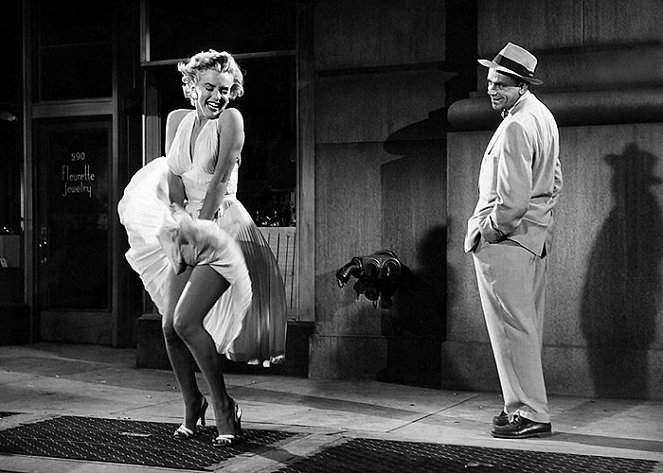
British comedies of the 1950s and 60s
In England, film adaptations of theatrical farces were already popular in the 1930s, but internationally successful comedies that excelled in British dry humour and puns only began to emerge in the late 1940s at the Ealing studio in London, which continued to make comedies in the 1950s. The most famous of them starred Alec Guinness; for instance, Kind Hearts and Coronets (1949) cynically told the story of an imprisoned murderer and his quest for a coveted noble title, The Lavender Hill Mob (1951) was about a botched smuggling of stolen gold, the sci-fi comedy The Man in the White Suit (1951) told the story of an inventor and his discovery of an indestructible substance, and in the crime comedy The Ladykillers (1955), a gang of thieves set about plotting a challenging heist in the lodgings of an elderly landlady, in front of whom they pose as a string quartet. Whisky Galore! (1949), Passport to Pimlico (1949) and The Titfield Thunderbolt (1953) also won their fans. Among the comedies from other studios, The Million Pound Note (1954), co-produced with the USA, the crime comedy The League of Gentlemen (1960), and the series of medical comedies begun with Doctor in the House (1954) have made history.
In the 1960s much of British comedy production moved to television, yet there were plenty of memorable exceptions. Four Oscars (including Best Picture) went to the costume romantic comedy Tom Jones (1963). Highly acclaimed were also the musical comedies featuring The Beatles, notably A Hard Day's Night (1964), the cut scenes of which became the prototype for the music video, Help! (1965) and the animated Yellow Submarine (1968). The films A Stitch in Time (1963), Those Magnificent Men in Their Flying Machines (1965), Bedazzled (1967) and The Italian Job (1969), an action-comedy starring Michael Caine, also earned their place in the sun. The biggest phenomenon, however, was a series of detective comedies starring Peter Sellers as police inspector Jacques Clouseau. Sellers, who had already taken lead roles in the satirical films The Mouse That Roared (1959) and I Like Money (1961), portrayed the character of a bungling investigator, famous for his disguises and accents, first in The Pink Panther (1963) and A Shot in the Dark (1964), which were filmed in America. However, in the following film, Inspector Clouseau (1968), a purely British production, he was replaced by Alan Arkin in the lead role and the result was a flop. The resurrection of the series and the return of Peter Sellers did not occur until the 1970s with The Return of the Pink Panther (1975), The Pink Panther Strikes Again (1976) and Revenge of the Pink Panther (1978).
The Ladykillers (1955)
Photo © J. Arthur Rank Film Distributors
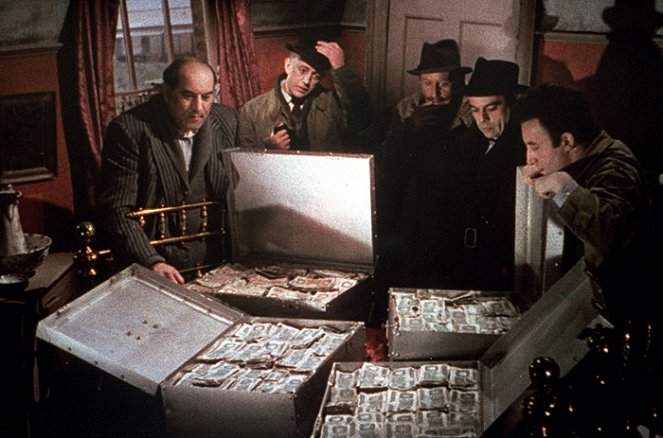
Italian and French comedies of the 1950s and 60s
Italy produced successful comedies, known as "Commedia all'italiana", especially between the late 1950s and the mid-70s. They were often comedies of manners or relationship comedies with farcical humour, focusing on thorny social issues and the social, religious and economic themes of Italian neorealism. The most frequent creators were directors Mario Monicelli, Dino Risi, Pietro Germi, Ettore Scola, Vittorio De Sica, among many others. The first representative of this wave is considered to be the crime comedy Big Deal on Madonna Street (1958), about a group of crooks attempting a larger organised robbery. Another notable example was Divorce Italian Style (1961), whose satirical tale of a baron trying to get rid of his wife for a more attractive suitor (at a time when divorce was illegal in Italy and a greater stain on honour than murder for infidelity) won the Oscar for screenplay. Oscar nominations for Best Foreign Language Film included the war comedy The Great War (1959), the romantic comedy Marriage Italian Style (1964), The Girl with a Pistol (1968), Scent of a Woman (1974) and the anthology film Viva Italia! (1977), and the romantic comedy Yesterday, Today and Tomorrow (1963) comprising three different stories actually won it. Other notable films include Everybody Go Home (1960), The Easy Life (1962), the crime comedies Mafioso (1962) and The Organiser (1963), the adventure comedy For Love and Gold (1966), and later, Come Home and Meet My Wife (1974) and An Average Little Man (1977).
Comedy has always been the most popular film genre in France, and its form, based mainly on satire and verbal humour, was greatly influenced by the Second World War and the subsequent post-war transformation of Europe. Jacques Tati's films enjoyed considerable popularity, especially Mr. Hulot's Holiday (1953), in which he played the lead role and presented a panopticon of human characters through the example of summer vacationers from various European countries. He returned to the character of the clumsy and kind-hearted Mr. Hulot in the Oscar-winning film My Uncle (1958), in which he took a sceptical look at the urban lifestyle and the process of automation, and also in Playtime (1967), in which he satirized modernism. Fernandel was another important French comedy actor of the 1950s. After appearing in the crime comedy The Red Inn (1951), he became famous for his starring role as a parish priest fighting the communists in The Little World of Don Camillo (1952), which received four sequels over the years. In the 1960s, French New Wave directors Jean-Luc Godard (A Woman Is a Woman, 1961) and François Truffaut (Stolen Kisses, 1968) introduced the sub-genre of romantic comedy.
My Uncle (1958)
Photo © Specta Films
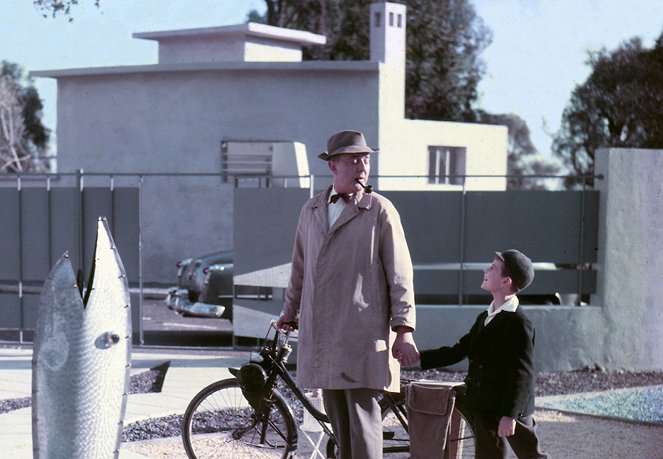
Louis de Funès and Jean-Paul Belmondo
French actor Louis de Funès was gaining popularity already in the 1950s with the comedies To Hell with the Virtue (1953) and The Crossing of Paris (1956), but his first leading role was in Like a Hair in the Soup (1957), in which he plays a composer whose career is unexpectedly kick-started by a failed suicide attempt. He was then cast in Neither Seen Nor Recognized (1958), The American Beauty (1961) and Squeak-Squeak (1963), among others, but what made him a legend was a six-part series about a choleric lawman from the French Riviera that began with The Troops of St. Tropez (1964). His frequent collaborator was Bourvil, who also starred in Mr. Peek-a-Boo (1951) and All the Gold in the World (1961). He created an unforgettable duo with Funès in the wartime comedy Don't Look Now: We're Being Shot At (1966), in which they become involuntary guides for British pilots shot down by the Germans over Paris. In the Troops series, Funès's regular acting partner was Michel Galabru (War of the Buttons, 1962), while in the trilogy Fantomas (1964), Fantomas Strikes Back (1965) and Fantomas vs. Scotland Yard (1967) he was accompanied by Jean Marais (The Reluctant Spy, 1963). Funès's other comedy hits in the 1960s include Rob the Bank (1964), The Big Restaurant (1966), The Little Bather (1967), The Exchange Student (1967), Oscar (1967) and The Tattoo (1968), and in the 1970s he added The Band (1970), Delusions of Grandeur (1971), The Mad Adventures of Rabbi Jacob (1973), The Wing and the Thigh (1976) and The Discord (1978), among others.
Jean-Paul Belmondo became famous for his comedies and crime and action films, in which he played the roles of charming thieves, adventurers, policemen and secret agents. The beginning of his career was influenced by the French New Wave (e.g. the crime comedy Crazy Pete, 1965), when the era of the perfect hero in classic films was coming to an end and Belmondo impressed with his casual appearance and charismatic performances. Adventure-comedies such as That Man from Rio (1964) and Up to His Ears (1965) made him a commercially sought-after star. He then took starring roles in Tender Scoundrel (1966), The Brain (1969), The Scoundrel (1971) and The Man from Acapulco (1973), in which he became famous for his dual role as a writer and his fictional alter-ego, an elite super-agent. Another double role came with the action comedy Animal (1977), in which played an effeminate actor and his stunt double, performing all his stunts himself. In addition, Belmondo appeared, among others, in Incorrigible (1975) and Happy Easter (1984), the war comedies Ace of Aces (1982) and The Vultures (1984), and the crime comedies Cop or Hood (1979) and Hold-Up (1985).
Don't Look Now: We're Being Shot At (1966)
Photo © Valoria Films
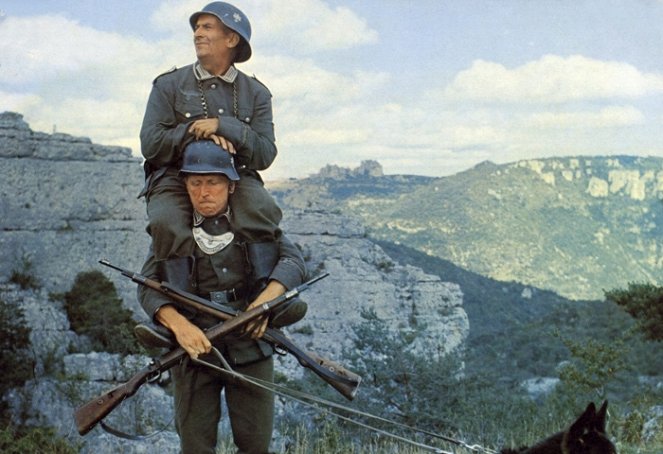
American comedies of the 1960s
Dr. Strangelove (1964), Stanley Kubrick's four Oscar-nominated war satire that used black humour to poke fun at the Cold War and the threat of nuclear war, starred Peter Sellers (fresh from the success of The Pink Panther) portraying three different characters. George Cukor's comedy musical My Fair Lady (1964), starring Audrey Hepburn as a plain-spoken florist who was trained in etiquette as part of a bet, won eight Oscars. Audrey Hepburn also starred in the romantic comedies Breakfast at Tiffany's by Blake Edwards (1961) and Paris – When It Sizzles by Richard Quine (1964), as well as in William Wyler's crime comedy How to Steal a Million (1966).
Doris Day styled herself as the perfect housewife in several comedies, such as The Thrill of It All (1963) and Move Over, Darling (1963). The sex comedy phenomenon of the 1950s was followed by films such as Let's Make Love (1960) and Billy Wilder's five Oscar-winning The Apartment (1960), starring Jack Lemmon and Shirley MacLaine in the story of a clerk who lends his flat to colleagues to meet their mistresses. But the sexual revolution of the 1960s introduced new trends in the USA, and romantic comedies in which women were mere prey soon fell out of favour. The shape of cinema was also fundamentally influenced by the demise of the production code and the advent of the so-called New Hollywood era in the second half of that decade. In the comedy genre, this culminated with Mike Nichols's The Graduate (1967), which was nominated for seven Academy Awards and told the story of a college student (Dustin Hoffman) who begins a secret love affair with an older married woman (Anne Bancroft), only to fall in love with her daughter (Katharine Ross).
Stanley Kramer's conversational comedy Guess Who's Coming to Dinner (1967) took in two of its ten Oscar nominations with its story about a white married couple who have to cope with their daughter's black boyfriend, and the comedies It's a Mad, Mad, Mad, Mad World (1963) and The Great Race (1965) were also nominated for several golden statuettes. Other American comedy productions of the 1960s of note include the Billy Wilder’s One, Two, Three (1961), the crime comedy Ocean's Eleven (1960), the comedy musicals What a Way to Go! (1964), Mary Poppins (1964) and Hello, Dolly! (1969), the romantic comedies Come September (1961), Barefoot in the Park (1967) and Cactus Flower (1969), the sci-fi comedy The Nutty Professor (1963), the horror comedy The Little Shop of Horrors (1960), and the Italian co-production The Taming of the Shrew (1967).
Breakfast at Tiffany's (1961)
Photo © Paramount Pictures
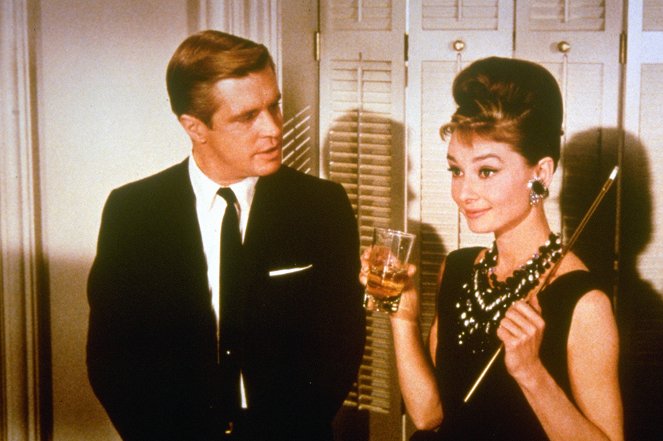
Woody Allen, Mel Brooks and the 1970s in America
New Hollywood brought new themes, subjects and filmmaking techniques, and also a lot of changes – traditional genre formulas were broken down and films became more open. For instance, the black comedy A New Leaf (1971), whose impoverished protagonist decides to marry a wealthy heiress for her fortune, planning to kill her at the right moment, and Harold and Maude (1971), about the friendship of a twenty-year-old man obsessed with death and an energetic eighty-year-old woman, offered a new approach to comedic romance. Another unconventional romantic hero was the bespectacled film critic played by Woody Allen in Play It Again, Sam (1972), whose dialogue revolved largely around relationship and sexual peripeteia, and was also a demythologising homage to Casablanca (1942). Woody Allen was also a screenwriter and director who created his own distinctive comedy sub-genre, profoundly influenced by his neurotic intellectual protagonists, in which he often cast himself.
He had began as a solo comedian dealing with relationships with women, death and psychoanalysis, themes that would later permeate his films. His earliest works include the crime comedy Take the Money and Run (1969), the political satire Bananas (1971), the sexual revolution-inspired Everything You Always Wanted to Know About Sex * But Were Afraid to Ask (1972), the sci-fi comedy Sleeper (1973), and Love and Death (1975), a comedic homage to 19th century Russian literature. His breakthrough, however, was the four Oscar-winning romantic comedy Annie Hall (1977), in which he and Diane Keaton portray a couple going through the courtship process while debating the absurdity of relationships and the impossibility of true love. It was a film that influenced fashion trends, introduced audiences for the first time in history to the so-called breaking of the fourth wall (communication of the film character directly with the viewer) and made Woody Allen the king of independent New York cinema. He would follow it with Manhattan (1979), a comedic homage to New York, and continued to consolidate his filmmaking position in the following decades.
Another prominent figure was Mel Brooks, who started out as a television and theatre writer and made his debut in the film world with The Producers (1967), a comedy that dealt with the backstage of the theatre industry. Brooks won an Oscar for his screenplay for the story of a pair of cunning protagonists (Zero Mostel and Gene Wilder) who decide to collect money from an insurance company for a theatrical flop, only to accidentally create a surprise audience hit. Brooks then went on to make a name for himself as a creator of wacky movie parodies, such as Blazing Saddles (1974), a parody of westerns, Young Frankenstein (1974), which poked fun at Universal's horror films, and High Anxiety (1977), which took aim at the films of Alfred Hitchcock, while in Silent Movie (1976) he tried to make a colour silent slapstick film with a cast of stars playing themselves.
Neil Simon was another prominent figure, a screenwriter whose pen produced, among others, the comedies The Out of Towners (1970), Plaza Suite (1971), The Heartbreak Kid (1972), The Goodbye Girl (1977) and Murder by Death (1976), which played with the clichés of detective novels. Peter Bogdanovich's What's Up, Doc? (1972) drew on the wacky romantic comedies of the 1930s and 1940s, while Mike Nichols's Catch-22 (1970) and Robert Altman's five Oscar-nominated M*A*S*H (1970), set during the Korean War, were war satires. Seven golden statuettes went to George Roy Hill's crime comedy The Sting (1973), about a pair of crooks who lure a feared gangster into a racing con. Robert Mulligan's Same Time, Next Year (1978) was nominated for four Oscars, and director Billy Wilder continued his work with romantic comedies such as Avanti! (1972) and The Front Page (1974).
Annie Hall (1977)
Photo © Metro-Goldwyn-Mayer (MGM)
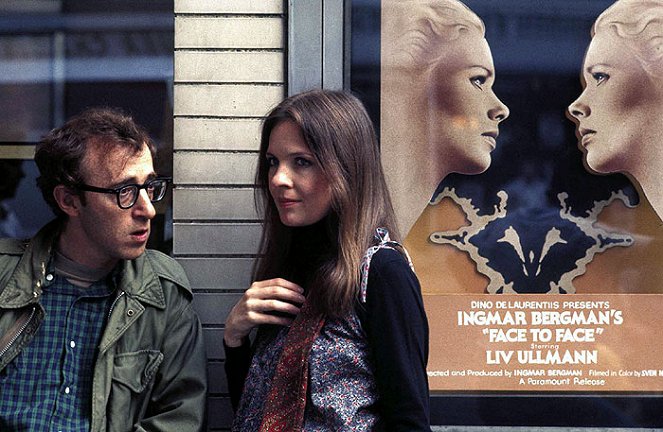
Monty Python and British comedy of the 1970s and 80s
In the UK, a number of film comedies were made in the early 1970s based on successful television series of the same name (e.g. Dad's Army, 1971), and the comedy group Monty Python, founded in 1969, also came from a TV background. Its members were comedians John Cleese, Graham Chapman, Eric Idle, Michael Palin, Terry Gilliam and Terry Jones, and they became famous for a sketch series called Monty Python's Flying Circus, in which they usually played more than one character, and was full of dry British humour, Dadaist gags and verbal jokes. Their first film, And Now for Something Completely Different (1971), was essentially a compilation of the best of the first two seasons of the series and was intended for the American market, where the series was not airing at the time. Its success was followed by the outright cinematic comedies Monty Python and the Holy Grail (1975), a wacky parody of Arthurian legends, the controversial Life of Brian (1979), which poked fun at the church, the story of Jesus Christ and religious fanaticism, and Monty Python's The Meaning of Life (1983), a musical anthology film about the various stages of human existence.
In addition, Monty Python members would appear in other comedies, including the pirate parody Yellowbeard (1983) and the American co-produced crime comedy A Fish Called Wanda (1988), which depicted the story of four robbers fighting over a loot. Other British comedies from the 1980s worth mention include Bruce Robinson's conversational comedy Withnail and I (1987) and Lewis Gilbert's Shirley Valentine (1989), whose title character, played by Pauline Collins, decides to solve her own midlife crisis by going to Greece, as well as the wacky comedy Clockwise (1986) and the detective comedy Without a Clue (1988), which made fun of Sherlock Holmes stories.
Life of Brian (1979)
Photo © HandMade Films
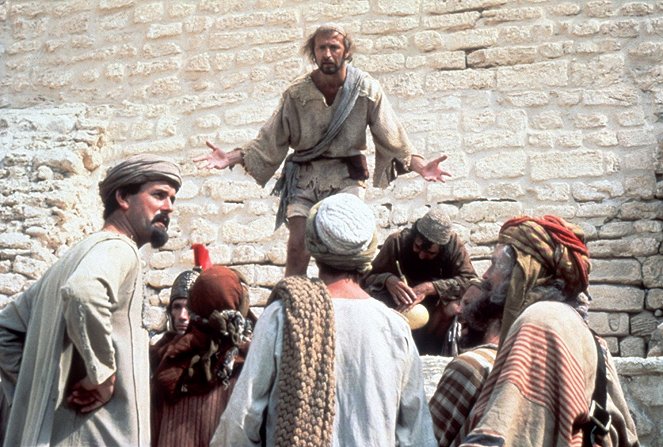
The new faces of French comedy in the 1970s and 80s
In addition to the established comedy actors from the previous decades (Funès, Belmondo, Galabru, etc.), newcomers such as Gérard Depardieu, Pierre Richard, Daniel Prévost and actors associated with the theatre company Le Splendid, such as Christian Clavier, Michel Blanc, Gérard Jugnot and Thierry Lhermitte, began to make their mark in the French comedies of the 1970s. Originally just a musical group, Les Charlots was also popular, with its members also making their mark in film with the wacky comedies Rookies Run Amok (1971), Stadium Nuts (1972), The Big Store (1973), Sadsacks Go to War (1974) and many more. The most prominent new comedy directors of this period were Claude Zidi, Francis Veber, Bertrand Blier, and Jean-Marie Poiré, who directed, among others, Gramps Is in the Resistance (1983), Twist Again in Moscow (1986) and the politically incorrect Christmas comedy Santa Claus Is a Stinker (1982).
Gérard Depardieu got his start in film with the comedies The Annuity (1972) and The Down-in-the-Hole Gang (1974) and then played one of the lead roles in Going Places (1974), the controversial story of a pair of cynical hooligans wandering across France. His career thereafter followed more the path of an award-winning character actor in serious dramas, but he still appeared in comedies such as Get Out Your Handkerchiefs (1978) and Ménage (1986), as well as in the black humour-soaked crime comedy Buffet Froid (1979). In the 1980s he also appeared with Pierre Richard in La Chevre (1981), The ComDads (1983) and The Fugitives (1986). Pierre Richard, in contrast, focused only on comedies, excelling in them with his roles as absent-minded, goofy and shy heroes. He first broke through emphatically with his directorial debut, Distracted (1970), in which he commits several scandals as an employee of an advertising agency. He followed up with, among others The Troubles of Alfred (1972) a I’m Shy, But I’ll Heal (1978) and starred in The Tall Blonde Man with One Black Shoe (1972), I’m Losing My Temper (1974), The Wild Goose Chase (1975), The Toy (1976), The Umbrella Coup (1980), and Door on the Left as You Leave the Elevator (1988).
As for the group around the theatre company Le Splendid, in addition to the aforementioned films, the comedies For 200 Grand, You Get Nothing Now (1982), Les Rois du gag (1985), and the trilogy begun with French Fried Vacation (1978) also received great acclaim. More successful, however, were the crime comedies My New Partner (1984) and My New Partner at the Races (1990), starring Philippe Noiret and Thierry Lhermitte. Other French comedies include the war trilogy Now Where Did the Seventh Company Get to? (1973), The Seventh Company Has Been Found (1975) and The Seventh Company Outdoors (1977), films such as Big Deal (1973), Maxim’s Porter (1976), Jupiter’s Thigh (1980), Banzai (1983), and La Cage aux Folles (1978), which was a hit in the USA and received three Oscar nominations.
The Big Store (1973)
Photo © AMLF
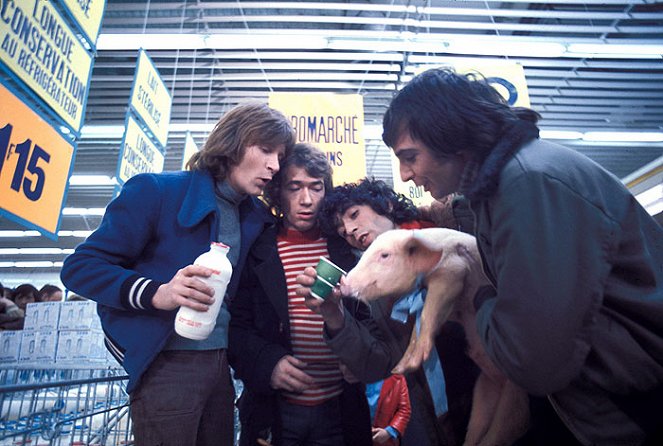
Other European comedies of the 1970s and 80s
In Italy, films starring Terence Hill (the western comedy Man of the East from 1972 and My Name Is Nobody from 1973) and Bud Spencer (1973's The Knock Out Cop and 1980's Flatfoot on the Nile) became comedy hits, as well as films starring both (notably 1970's They Call Me Trinity, 1972's All the Way Trinity, 1974's Watch Out, We're Mad and 1978's Odds and Evens), while films such as The Diamond Peddlers (1975) and Kid Stuff (1975) were further variations on their comedies. Paolo Villaggio also became a popular comedic actor thanks to his leading roles as the eternal underdog in White Collar Blues (1975), The Second Tragic Fantozzi (1976) and Fantozzi Against the Wind (1980) and their sequels. Also notable were the later comedies Bonnie and Clyde Italian Style (1982) and The Country Boy (1984), while the more artistic films include the controversial The Big Feast (1973) and some of Federico Fellini's more comedic films, such as Amarcord (1973) and City of Women (1980).
In Czechoslovakia, the invasion of Soviet troops in 1968 brought an end to a prolific period of New Wave cinema, from which Miloš Forman's comedies such as Black Peter (1963) and The Firemen's Ball (1967) stood out. That period was followed by the so-called normalization comedies, apolitical escapist films that were made in accordance with the ideology of the ruling party and thus legitimised their vision of the world as the norm (see, for example, We'll Kick Up a Fuss Tomorrow, Darling... from 1976). However, socially satirical comedies, such as those made by directors Jiří Menzel (Secluded, Near Woods, 1976) and Ladislav Smoljak (Ball Lightning, 1978), also enjoyed considerable popularity, as did comedies containing various parodic, supernatural and fairytale elements, in which Václav Vorlíček (The Girl on the Broomstick, 1971) and Oldřich Lipský (Adela Has Not Had Her Supper Yet, 1977) specialised. Some of the more popular comedies of this period include You Are a Widow, Sir (1970), Marecek, Pass Met the Pen! (1976), Waiter, Scarper! (1980), I Enjoy the World with You (1982), and My Sweet Little Village (1985). In Poland, the leading comedy filmmaker was Juliusz Machulski, who became famous early in his career with Hit the Bank (1981) and Point of No Return (1984), the sci-fi comedy Sexmission (1983) and the fantasy comedy King Size (1987).
Spanish director Luis Buñuel made his last surrealist comic films in France in the 1970s: the Oscar-winning The Discreet Charm of the Bourgeoisie (1972) and The Phantom of Liberty (1974). In the 1980s, director Pedro Almodóvar began to make a name for himself in Spain, debuting with the comedy Pepi, Luci, Bom and Other Girls Like Mom (1980), followed by the Oscar-nominated Labyrinth of Passion (1982), Dark Habits (1983), What Have I Done to Deserve This (1984) and, most importantly, Women on the Verge of a Nervous Breakdown (1988), which was also nominated for an Oscar. Aki Kaurismäki began making films in Finland in the 1980s and his filmography includes several distinctive comedies, such as Calamari Union (1985), Shadows in Paradise (1986), Hamlet Goes Business (1987) and Leningrad Cowboys Go America (1989). Among the Swedish comedies, the most notable is a wacky parody on the life of Pablo Picasso called The Adventures of Picasso (1978). Yugoslavia produced a series of comedies that made history with their wacky humour: National Class Category Up to 785 Ccm (1979), Who’s Singin’ Over There? (1980), The Elusive Summer of ‘68 (1984), Unseen Wonder (1984) and The Beauty of Vice (1986).
The Firemen's Ball (1967)
Photo © Filmové studio Barrandov / Jaromír Komárek
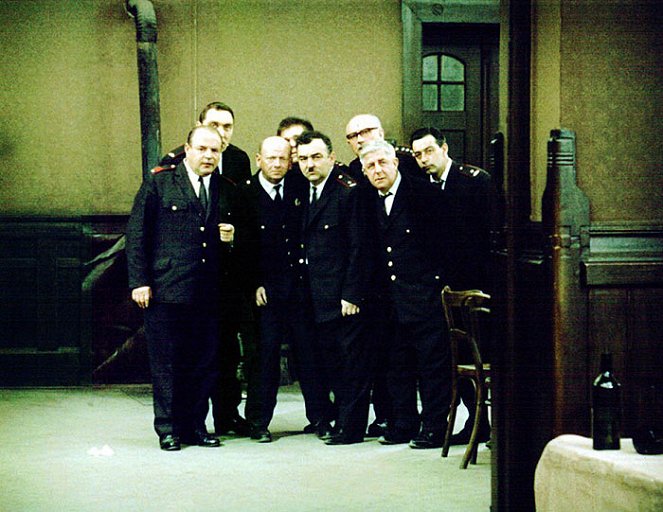
The rise of the parodies and other American comedies of the 1980s
Ten years after its premiere, the disaster film Airport (and its numerous sequels) were made fun of in the parody Airplane! (1980), directed by Jerry Zucker, David Zucker and Jim Abrahams, who followed it with the spy-war parody Top Secret! (1984). Mel Brooks continued working on parodies with History of the World: Part I (1981), which pokes fun at epic historical films, and Spaceballs (1987), in which he takes on the science fiction genre and the Star Wars franchise in particular. The comedy Police Academy (1984), which went on to spawn six sequels, focused on clichéd police films, as did the trilogy with Leslie Nielsen that began with David Zucker's The Naked Gun: From the Files of Police Squad! (1988). Rob Reiner's mystifying documentary about a fictional hard rock band This Is Spinal Tap (1984) turned music documentaries and stereotypes in popular music on their head.
Comedians like Bill Murray (Caddyshack, 1980), Steve Martin (Dead Men Don’t Wear Plaid, 1982), Dan Aykroyd (Trading Places, 1983), Chevy Chase (Spies Like Us, 1985), Rick Moranis (Little Shop of Horrors, 1986), Robin Williams (Good Morning, Vietnam, 1987), Tom Hanks (Big, 1988) and Eddie Murphy (Coming to America, 1988) became the new faces of film comedies. Murphy also made a name for himself in the sub-genre of action comedies with 48 Hrs. (1982) and Beverly Hills Cop (1984), a big audience hit that was followed by two sequels. Ivan Reitman's comedy Ghostbusters (1984), about four paranormal investigators, and Robert Zemeckis's comedic sci-fi trilogy Back to the Future (1985, 1989 and 1990), whose protagonists repeatedly travel between the past, present and future in an attempt to correct their own mistakes, leading to existential paradoxes, were also extremely financially successful. Robert Zemeckis was also successful with the detective comedy Who Framed Roger Rabbit (1988), which elegantly combined live actors with animated characters and received three Academy Awards.
Sydney Pollack's Tootsie (1982), starring Dustin Hoffman as an overlooked actor who decides to try his luck disguising himself as a woman, was nominated for nine Oscars. Five golden statuettes went to James L. Brooks’s Terms of Endearment (1983), which dealt with the romantic relationships of a mother and a daughter, three Oscars went to Norman Jewison's romantic comedy Moonstruck (1987), six awards went to Mike Nichols’s Working Girl (1988), and Driving Miss Daisy (1989) took in four of its nine nominations. Woody Allen continued to develop his neurotic and self-ironic humour in Stardust Memories (1980), A Midsummer Night's Sex Comedy (1982), Zelig (1983), Broadway Danny Rose (1984), The Purple Rose of Cairo (1985), Hannah and Her Sisters (1986) and Radio Days (1987). Jim Jarmusch, on the other hand, became the king of independent cinema with his tragicomic films Stranger Than Paradise (1984) and Down by Law (1986). John Hughes's comedies, especially the coming-of-age ones (1984's Sixteen Candles, 1985's The Breakfast Club), but also Ferris Bueller's Day Off (1986) and Planes, Trains & Automobiles (1987), won many devoted fans. He was also the screenwriter of Vacation (1983) and Christmas Vacation (1989), which were associated with the humour magazine National Lampoon, which had successfully come into the scene with the comedy Animal House (1978).
Comedies have included musicals (Blues Brothers, 1980), war (To Be or Not to Be, 1983), adventure (Romancing the Stone, 1984), horror (Re-Animator, 1985), action (Big Trouble in Little China, 1986), fantasy (The Witches of Eastwick, 1987), science fiction (Innerspace, 1987), fairytales (The Princess Bride, 1987) and crime (Midnight Run, 1988). A special category was family comedies, such as A Christmas Story (1983), Look Who's Talking (1989) and Honey, I Shrunk the Kids (1989). Cameron Crowe's high school romance Say Anything... (1989) and Rob Reiner's conversation and sex-infused comedy When Harry Met Sally... (1989), a story about two people who go from strangers to intimate friends to lovers in the course of several chance encounters, were big hits that contributed to the development of the romantic comedy sub-genre in the late 1980s and set the stage for their boom in the 1990s. Other notable films include the Coen Brothers' Raising Arizona (1987), Garry Marshall's Overboard (1987), James L. Brooks's Broadcast News (1987), Frank Oz's Dirty Rotten Scoundrels (1988), Danny DeVito's black comedy The War of the Roses (1989), and the bloody funny horror splatters The Toxic Avenger (1984), Bad Taste (1987), and the Evil Dead trilogy (1981, 1987, and 1992).
Ghostbusters (1984)
Photo © Columbia Pictures
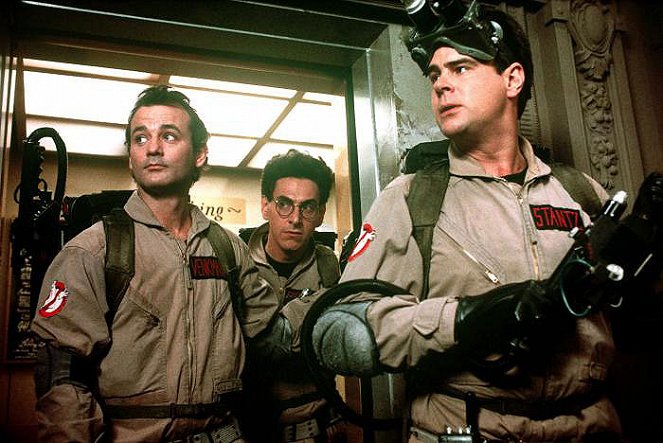
The renaissance of romantic comedies in the 1990s
The early 1990s saw a resurgence in the popularity of romantic comedies, but these were mostly free of the conversations about sex that were popular in the 1970s and 1980s, and rather returned to older, tried-and-true genre templates. Garry Marshall's Pretty Woman (1990) was a huge hit, making stars of Julia Roberts and Richard Gere in a story about the love of a millionaire businessman and his hired prostitute who find themselves suddenly in better company. Julia Roberts starred in other successful comedies, in particular My Best Friend’s Wedding (1997), Runaway Bride (1999) and Notting Hill (1999), whose final form was also the product of British screenwriter and later director Richard Curtis, who brought to it the dry English humour and quirky supporting characters he had already adopted as the screenwriter of Mike Newell's British comedy Four Weddings and a Funeral (1994), starring Hugh Grant and Andie MacDowell.
Meg Ryan, who starred in French Kiss (1995) and Addicted to Love (1997), was Julia Roberts's main competition in romantic comedies, and her best-known hits were the ones she made with director Nora Ephron and in which she was partnered with Tom Hanks: Sleepless in Seattle (1993) and You've Got Mail (1998). Other popular actresses include Sandra Bullock (While You Were Sleeping, 1995), Drew Barrymore (Never Been Kissed, 1999), Jennifer Aniston (Picture Perfect, 1997), Alicia Silverstone (Blast from the Past, 1999) and Julia Stiles (10 Things I Hate About You, 1999). The comedies Groundhog Day (1993), about a bumbling TV reporter who finds himself trapped in a time loop, and the Farrelly Brothers' There's Something About Mary (1998), whose protagonists, played by Cameron Diaz, Ben Stiller and Matt Dillon, go through a series of embarrassing moments involving the novel use of bodily fluids and other forms of vulgar humour, also generated considerable acclaim.
Pretty Woman (1990)
Photo © Touchstone Pictures
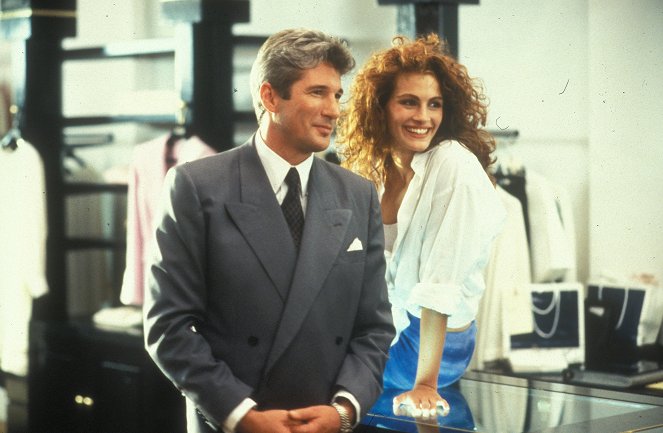
Other comedies on the 1990s
One of the most popular comedians of the 1990s was Jim Carrey, who was famous for his crazy acting style and rubber face. He was already working in films in the 1980s, but his breakthrough came in 1994 with the successful films Ace Ventura: Pet Detective, The Mask and Dumb & Dumber. He went on to star in the comedies The Cable Guy (1996) and Liar, Liar (1997), as well as the much more serious satire The Truman Show (1998) and the even more serious tragicomic biopic Man on the Moon (1999). Eddie Murphy also received considerable attention, starring in comedies such as The Distinguished Gentleman (1992), The Nutty Professor (1996), Doctor Dolittle (1998) and Bowfinger (1999). Robin Williams also wandered from film to film, taking on roles primarily in family comedies such as Mrs. Doubtfire (1993), Jumanji (1995) and Flubber (1997), while also collecting awards as a character actor in more serious films. Adam Sandler was starting to enjoy success, too, playing lead roles in the comedies Happy Gilmore (1996), The Wedding Singer (1998) and Big Daddy (1999).
The big hit of the 1990s, however, was the family comedy Home Alone (1990), whose story about a forgotten boy defending his house from a pair of burglars became a Christmas classic. Other successful films include the dark comedy The Addams Family (1991), the sports comedy about the Jamaican Olympic bobsled team Cool Runnings (1993), and the sci-fi comedy Men in Black (1997), about secret agents fighting the unwanted activities of aliens living on Earth. Filmmakers that continued to add to their comedy filmography include the Coen Brothers (Barton Fink, 1991, The Hudsucker Proxy, 1994, and The Big Lebowski, 1998), Jim Jarmusch (Night on Earth, 1991), and Woody Allen (Manhattan Murder Mystery, 1993, Bullets Over Broadway, 1994, and Mighty Aphrodite, 1995), who where joined by new directors such as Tom DiCillo (Living in Oblivion, 1995), Betty Thomas (Private Parts, 1997), Todd Solondz (Happiness, 1998), Wes Anderson (Rushmore, 1998) and Spike Jonze (Being John Malkovich, 1999). Kevin Smith became a cult filmmaker, starting with Clerks (1994) and Mallrats (1995), then tackling lesbian themes in the comedy Chasing Amy (1997), and finally satirizing the church in Dogma (1999).
In Australia (whose biggest comedy hit was 1986's Crocodile Dundee), director Chris Noonan made Babe (1995), a family comedy with talking animals that garnered seven Oscar nominations. Also nominated for the same number of awards was James L. Brooks's American comedy As Good as It Gets (1997), which explored the complicated relationship between a choleric curmudgeon and his favourite waitress, played by Jack Nicholson and Helen Hunt. Other comedies with Oscar ambitions include My Cousin Vinny (1992), a comedy of manners unusually set in a courtroom; Wag the Dog (1997), a political satire that distracted from the president's scandals with a phony war, and Gary Ross's Pleasantville (1998), about a pair of siblings falling into a nostalgic TV series. In the UK, the social comedy The Full Monty (1997) was a considerable success with its story about six unemployed men who decide to make a living performing in their own male strip show. Also popular were Danny Boyle's black comedies Shallow Grave (1994) and Trainspotting (1996), Guy Ritchie's gangster comedy Lock, Stock and Two Smoking Barrels (1998), the Monty Python-esque Fierce Creatures (1997), Bean (1997) starring Rowan Atkinson, and several Shakespeare adaptations such as Much Ado About Nothing (1993), Twelfth Night: Or What You Will (1996), and the unconventionally narrated Rosencrantz & Guildenstern Are Dead (1990).
Actor and screenwriter Mike Myers found success with his wacky musical comedy Wayne's World (1992), and then wrote himself a lead role in Austin Powers: International Man of Mystery (1997), a parody of Bond films. Other parodies include Hot Shots! (1991), Hot Shots! Part Deux (1993), Loaded Weapon 1 (1993) and Galaxy Quest (1999), which poked fun at the popularity of Star Trek and the sci-fi genre. Mel Brooks continued his parody work with Life Stinks (1991), which poked fun at Frank Capra films, as well as Robin Hood: Men in Tights (1993) and Dracula: Dead and Loving It (1995). American Pie (1999) became a phenomenon, merging the traditions of coming-of-age comedies with the traditions of sex comedies and fart jokes to create a specific sub-genre of teen comedies from which many filmmakers around the world would draw in the ensuing years. Other notable films from the end of the decade include the family comedy The Parent Trap (1998), the action comedy Rush Hour (1998), the drug-infused comedy Fear and Loathing in Las Vegas (1998), the animated South Park: Bigger, Longer & Uncut (1999), and the gangster comedy with Billy Crystal and Robert De Niro Analyze This (1999).
South Park: Bigger, Longer & Uncut (1999)
Photo © 1999 Paramount Pictures and Warner Bros.
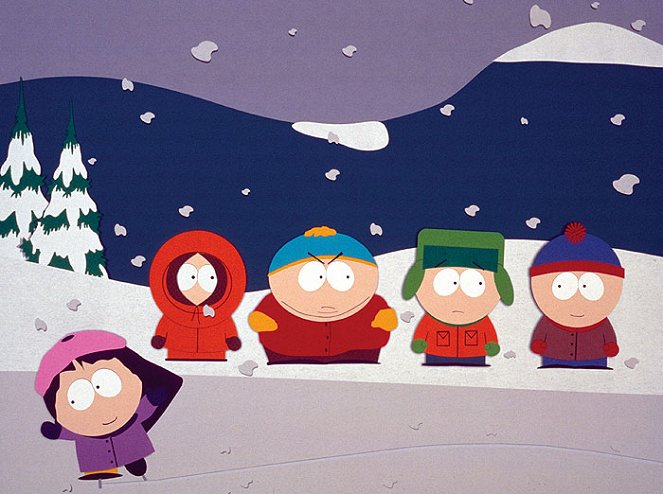
1990s comedies from France and other European countries
In France, Gérard Depardieu and Christian Clavier, in particular, stayed in the comedy genre, whether together (for example, the 1995 action-comedy Guardian Angels or the 1999 adventure-comedy Asterix and Obelix vs. Caesar) or separately. Gérard Depardieu starred in, among others, My Father the Hero (1994), The Closet (2001) and RRRrrrr!!! (2004), while Christian Clavier took leading roles in films such as The Thirst for Gold (1993), Lovely Rita (2003), Serial Teachers (2013), Serial (Bad) Weddings (2014), With Open Arms (2017) and Ibiza (2019). Both of them were accompanied by Jean Reno in several films – he and Clavier formed a pair in the fantasy-comedy series that began with The Visitors (1993) and also in The Corsican File (2004) and You Don't Choose Your Family (2011), and Depardieu was his partner in Shut Up! (2003). Jean Reno was also the star of the comedies The Jaguar (1996), Wasabi (2001) and The Chef (2012).
A series of action comedies that started with Taxi (1998) was also popular in France, as was the absurdist Actors (2000), which managed to cast a true plethora of famous French names. After 2000, another wave of actors entered the game, most notably Omar Sy (2011's The Intouchables, 2016's Two Is a Family), Dany Boon (2006's My Best Friend, 2008's Welcome to the Sticks and 2010's Nothing to Declare), Romain Duris (2010's Heartbreaker, 2012's Populaire) and Philippe Lacheau (2014's Babysitting, 2017's Alibi.com). Other successful French comedies include Delicatessen (1991), The Dinner Game (1998), Amélie (2001), Louise-Michel (2008), Little Nicholas (2009), Reality (2014), The Specials (2019) and La Belle Epoque (2019). Belgian-French comedies starring Benoît Poelvoorde, such as Romantics Anonymous (2010) and The Brand New Testament (2015), have also been internationally successful.
Some German productions were particularly successful, for instance Knockin’ on Heaven’s Door (1997) and Goodbye Lenin! (2003), the film series Suck Me Shakespeer (since 2013) and the festival hit Toni Erdmann (2016). In Finland, director Aki Kaurismäki followed up his quirky comedies with I Hired a Contract Killer (1990), Far Away the Clouds Escape (1996), The Man Without a Past (2002), Le Havre (2011) and The Other Side of Hope (2017). Emir Kusturica was the leading Serbian director with a filmography that includes the comedies Black Cat, White Cat (1998), Hungry Heart (2004) and Promise Me This (2007), the Serbo-Croatian satirical film The Priest's Children (2013), and the black comedy Train Driver's Diary (2016). In Spain, the comedies Spanish Affair (2014) and Spanish Affair 2 (2015), the Torrente franchise (since 1998) and the sports comedy Champions (2018) were financial hits. Polish comedies worth mentioning include Nothing Funny (1995) and Day of the Wacko (2002), the crime comedy Vinci (2004) and the romantic comedies Letters to Santa (2011) and Planet Single (2016). From Czechia and Slovakia, the most successful comedies include The Elementary School (1991), The Garden (1995), Buttoners (1997), Cosy Dens (1999), Loners (2000), Smart Philip (2003), Sunday League – Pepik Hnatek’s Final Match (2012), Lost in Munich (2015) and Women on the Run (2019). The cult comedies Peculiarities of the National Hunt (1995) and Peculiarities of the National Fishing (1998) were made in Russia, and several films were made in massive international European co-productions, such as The Hundred Year-Old Man Who Climbed Out of the Window and Disappeared (2013).
Shut Up! (2003)
Photo © Splendid film
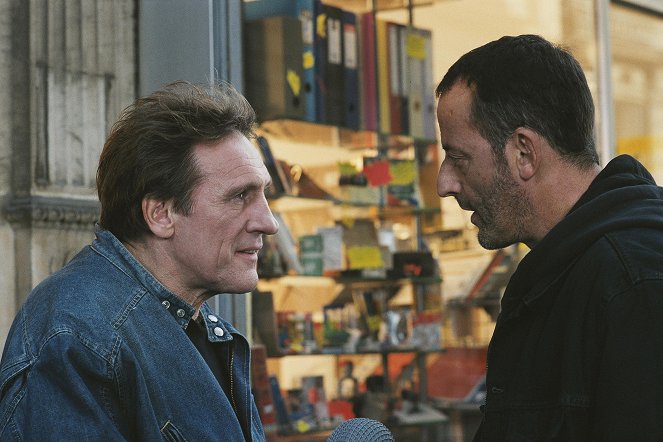
American and British comedies of the new millennium
Some of the most successful comedies made shortly after the turn of the millennium starred members of a group of actors known as the “Frat Pack” that included Ben Stiller (Meet the Parents, 2000), Owen Wilson (Starsky & Hutch, 2004), Vince Vaughn (Dodgeball: A True Underdog Story, 2004), Jack Black (The School of Rock, 2003), Will Ferrell (Stranger Than Fiction, 2006), Steve Carell (Little Miss Sunshine, 2006) and Luke Wilson (Idiocracy, 2006). Several of them shared the screen in films such as The Royal Tenenbaums (2001), Zoolander (2001), Old School (2003), Anchorman: The Legend of Ron Burgundy (2004), Wedding Crashers (2005), Night at the Museum (2006), Tropic Thunder (2008) and The Big Year (2011). In addition, Jack Black appeared in Be Kind Rewind (2008), Will Ferrell starred in the action comedy The Other Guys (2010), Ben Stiller succeeded with The Secret Life of Walter Mitty (2013) and Steve Carell played one of the leading roles in Crazy, Stupid, Love (2011) and Battle of the Sexes (2017). Owen Wilson was regularly cast by director Wes Anderson in his comedies The Life Aquatic with Steve Zissou (2004), The Darjeeling Limited (2007) and The Grand Budapest Hotel (2014).
Female comedians such as Kristen Wiig (Bridesmaids, 2011), Melissa McCarthy (Spy, 2015), Amy Schumer (Trainwreck, 2015), Kate McKinnon (Ghostbusters, 2016) and Rebel Wilson (Isn’t It Romantic, 2019) also received significant attention. The shape of American comedies was influenced by director and screenwriter Judd Apatow, who made crass films like The 40 Year-Old Virgin (2005), Knocked Up (2007), Funny People (2009) and The King of Staten Island (2020), and also produced Superbad (2007), Forgetting Sarah Marshall (2008), Get Him to the Greek (2010) and The Big Sick (2017), among others. Kevin Smith followed up his previous work with films such as Jay and Silent Bob Strike Back (2001) and Clerks II (2006), and so did Adam Sandler with The Longest Yard (2005) and Just Go with It (2011). Other actors and actresses with promising comedy careers include Katherine Heigl (The Ugly Truth, 2009), Mila Kunis (Friends with Benefits, 2011), Jonah Hill (21 Jump Street, 2012), James Franco (This Is the End, 2013) and Seth Rogen (The Interview, 2014). Action film stars like Mark Wahlberg (Ted, 2012) and Dwayne Johnson (Jumanji: Welcome to the Jungle, 2017) also found their way into the comedy genre.
Romantic comedies in the early years of the new millennium were marked by big British hits such as Sharon Maguire's Bridget Jones's Diary (2001) and Richard Curtis's star-studded Love Actually (2003), which eventually became a Christmas romantic classic. Other successful films include About a Boy (2002), Punch-Drunk Love (2002), My Big Fat Greek Wedding (2002) and 50 First Dates (2004). But in the years that followed, the classic themes of romantic comedies began to run out of steam, and films featuring unorthodox themes and unconventional elements came to the fore. Some romantic comedies, for example, were spiced up with supernatural themes (2005's Just Like Heaven, 2012's Ruby Sparks), time travel (2011's Midnight in Paris, 2013's About Time, 2020's Palm Springs), pop culture references and comic book aesthetics (2010's Scott Pilgrim vs. the World), or the exploration of new levels of vulgarity and sexual boundaries (2008's Zack and Miri Make a Porno). The films Something's Gotta Give (2003) and It's Complicated (2009), directed by Nancy Meyers, offered new narratives about the love affairs of older generations.
Also popular at the beginning of the millennium were “stoner comedies” such as Dude, Where’s My Car? (2000), How High (2001), Harold & Kumar Go to White Castle (2004) and Pineapple Express (2008). The Scary Movie franchise (since 2000) rode on the popularity of parodies, as did a trilogy starring Rowan Atkinson that begun with Johnny English (2003), which poked fun at Bond films, while British director Edgar Wright's Shaun of the Dead (2004) and Hot Fuzz (2007) mocked the clichés of various genres. The social and political satire peaked with the controversial Sacha Baron Cohen films Borat (2006), Brüno (2009) and The Dictator (2012), while the comedy superhero films Kick-Ass (2010) and Deadpool (2016) became phenomenons, and The Hangover trilogy (2009, 2011 and 2013) was extremely successful. Also worth mention are the horror comedies Zombieland (2009) and Tucker & Dale vs. Evil (2010), Jason Reitman's Thank You for Smoking (2005), Juno (2007) and Up in the Air (2009), the latter two of which were Oscar contenders, and several other Oscar-nominated comedies such as Birdman (2014), The Big Short (2015), Green Book (2018) and Jojo Rabbit (2019).
The Life Aquatic with Steve Zissou (2004)
Photo © 2004 Touchstone Pictures
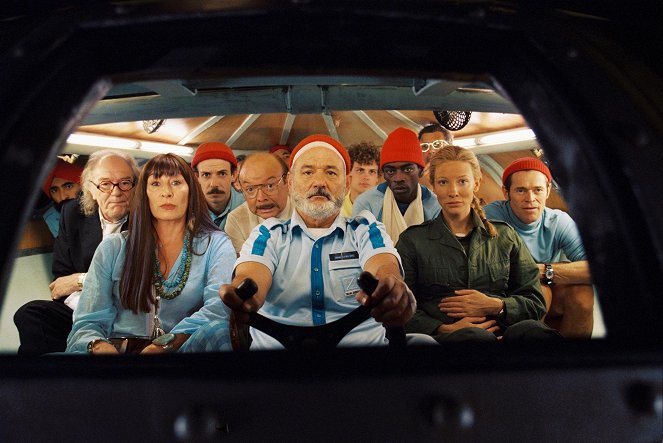
Sitcoms and other comedy series
The term "sitcom" is shorthand for situation comedy, which was born on radio but has since become the dominant form of the comedy genre on television. Its protagonists are a fixed group of characters moving in a limited number of locations and experiencing situations of various nature, with the humour coming firstly from their reactions and secondly from their interaction and conversations. Sitcoms usually take the form of series with not very long episodes (typically about half an hour), and some are filmed in front of a live audience. The gags are usually accompanied by a soundtrack capturing the audience's laughter, but many sitcoms also used pre-recorded laughter. One of the first ever sitcoms was the British Pinwright's Progress, which ran on the BBC from 1946 to 1947. The most successful British sitcom of the 1950s was the war-themed series The Army Game (1957-1961), while in America the most watched was I Love Lucy (1951-1957). Particularly successful in the 1960s were the family comedy series The Andy Griffith Show (1960-1968) and The Dick Van Dyke Show (1961-1966), named after the actors in the lead roles, and the British wartime satire series Dad's Army (1968-1977).
In the 1970s, The Mary Tyler Moore Show (1970-1977), One Day at a Time (1975-1984) and several others were the most successful series in America, but the most memorable would be the legendary M*A*S*H (1972-1983). Also crucial was Saturday Night Live, which started in 1975 and has become one of the longest-running shows in the US, with sketches that would introduce many of the future comedy stars of the following decades. In the UK, the 1970s and 1980s were the golden age of sitcoms and comedy series. Monty Python’s Flying Circus (1969-1974) had started already in 1969, but also unforgettable were the sitcoms Fawlty Towers (1975-1979), The Good Life (1975-1978), Porridge (1974-1977) and the long-running Last of the Summer Wine (1973-2010). In 1980s they were joined by the political satires Yes, Minister (1980-1984) and Yes, Prime Minister (1986-1988), the series Blackadder (1983-1989), The Young Ones (1982-1984) and the cult sci-fi sitcom Red Dwarf (1988-1993), which had new episodes in 2009 and 2012 and between 2016 and 2020.
The American comedy TV productions of the 1980s worth mention include Cheers (1982-1993), Married with Children (1987-1997) and the family sci-fi sitcom ALF (1986-1990). In the 1990s, Mr. Bean (1990-1995), Friends (1994-2004), Sex and the City (1998-2004), as well as the animated series The Simpsons (since 1989) and South Park (since 1997) all became phenomenons. Other popular shows include Step by Step (1991-1999), Home Improvement (1991-1999), Frasier (1993, 2004), The Nanny (1993-1999), Seinfeld (1989-1998), and the British sitcoms Father Ted (1995-1998), The Thin Blue Line (1995-1996) and Absolutely Fabulous (1992-2012).
After 2000, the television screens belonged mainly to comedy series such as Gilmore Girls (2000-2007), The Office (2001-2003), Black Books (2000-2004), Little Britain (2003-2006), Two and a Half Men (2003-2015), How I Met Your Mother (2005-2014), My Name Is Earl (2005-2009), The Big Bang Theory (2007-2019), The IT Crowd (2006-2010), The Inbetweeners (2008-2010), Modern Family (2009-2020), New Girl (2011-2018), Brooklyn Nine-Nine (since 2013) and What We Do in the Shadows (since 2019). There have also been a big number of animated comedy series, with the most interesting being Futurama (1999-2013), Family Guy (since 1999), American Dad! (since 2005), Ugly Americans (2010-2012), Rick and Morty (since 2013), BoJack Horseman (since 2014), and Disenchantment (since 2018).
Filmmaniak
Best comedies
Forrest Gump (1994) |
The Intouchables (2011) |
The Sting (1973) |
Journey into the Depth of the Student's Soul (1939) |
Back to the Future (1985) |
Life Is Beautiful (1997) |
The Twelve Tasks of Asterix (1976) |
Klaus (2019) |
Roman Holiday (1953) |
Some Like It Hot (1959) |
| All the best comedies |




